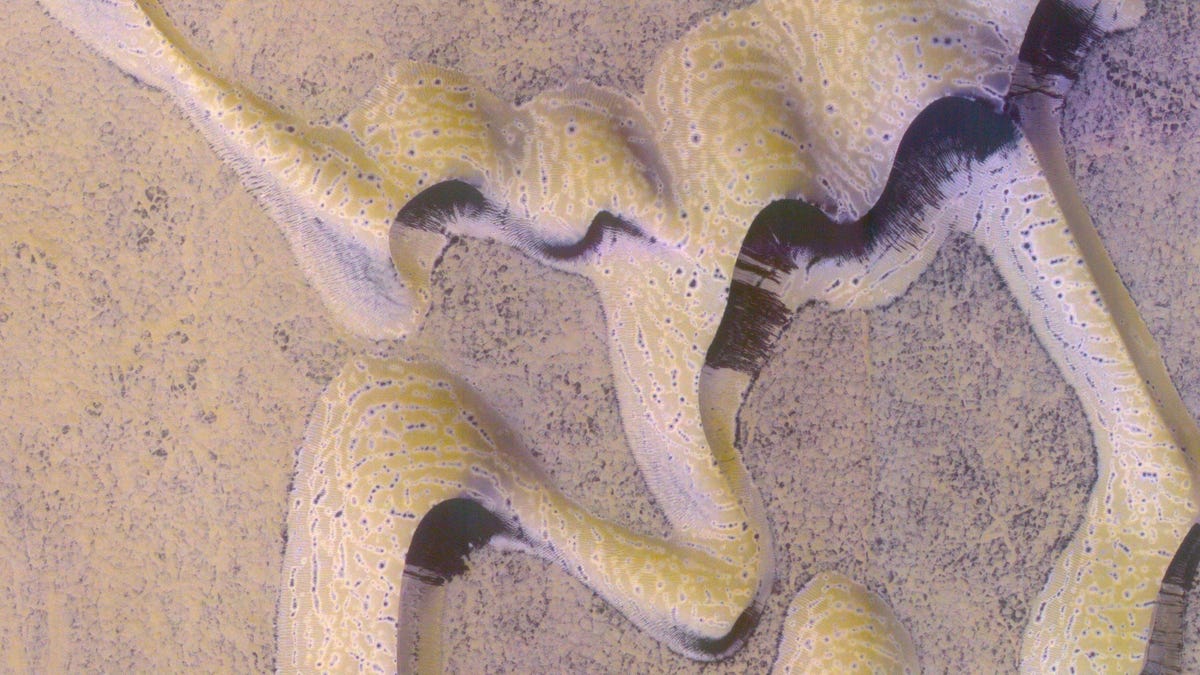Scientists Call Wild Wavy Landscape on Mars 'Especially Artistic'
They're eyeing ribbon-like shapes inside a Martian crater.
My uneven cake-decorating efforts have turned out to look a lot like a series of dunes found in the Kunowsky Crater on Mars. NASA's Mars Reconnaissance Orbiter snapped an eye-opening view of the dunes that shows a dramatic ribbon-like landscape.
Check out a wider view of these Martian dunes found in Kunowsky Crater.
The shot comes from MRO's HiRise camera, run by a team from the University of Arizona. HiRise snapped the image on Nov. 29, 2022 and the camera team highlighted it as an image of the day on Friday.
Seasonal changes account for the distinctive look of the dunes. "In the late winter when first illuminated, the carbon dioxide frost at high latitudes will begin to sublimate, the HiRise team wrote. "Over sand dunes, the defrosting spots and mass wasting on steep slopes produce striking patterns."
Sublimation happens when a solid turns directly into a gas. The process has contributed to spectacular scenery on Mars, including striking changes in a crater aptly known as the "Happy Face Crater."
The Kunowsky Crater's bonkers dunes have been an object of interest before. Researchers have puzzled over stripes that appeared in the dunes during autumn on Mars. "One hypothesis is that [the stripes] are caused by cracks in the ice that form from weaker eruptions or thermal stress as part of the day-night cycle, but research continues," NASA said in 2021.
The HiRise team described the scene as "especially artistic." That makes these dunes a standout on a planet that continually awes with its beauty and wildness. Nice work, Mars.


